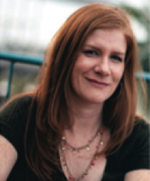Healthy Balance with Tara Antle
/By Mariana Hernández-Hernández, WorkStory Ambassador at Memorial University
Tara Antle’s work story is an excellent example of initiative, proactivity, and of how one experience (whether it be volunteering, work or school) can take us to the next one. Her work story also shows us how it is possible to do what we love as a job and even turn it into an entrepreneurial endeavour.
Tara is a Nutritionist whose weekly activities include private nutrition consultations, providing grocery store tours, hosting kitchen parties, giving cooking lessons, and organizing seminars and workplace wellness programs.
She’s also a regular guest on Rogers TV’s Out of the Fog (monthly segment called “Healthy Bellies”), Cross Talk on CBC’s Radio Noon with Ramona Deering, the CBC Morning Show with Anthony Germain, The NTV Evening News and Here and Now on CBC. Moreover, her articles and interviews have been published locally, provincially and nationally in The Telegram, NL Wellness Guide, The Downhomer, Fresh Juice Magazine, Atlantic Law Enforcement magazine and The Newfoundland Herald.
How did she get here?
When Tara graduated from high school in the city of St. John’s, Newfoundland, she didn’t know what type of work she wanted to do, so she took a few years to find herself. She devoted her time to volunteering with Helping Hands and The Community Services Council, working full time in retail, studying General Medical Sciences and taking evening courses at Memorial University of Newfoundland, which eventually evolved to full time General Studies.
Five years after being involved in these activities - and mainly because of her volunteer experience - Tara realized that she wanted to do something related to health care. She chose the Applied Human Nutrition program (BSc.AHN) at Mount Saint Vincent University in Halifax and was able to transfer all her credits from Memorial University. During her full time studies in Nutrition, she took elective courses in Business, worked as a Residence Assistant, and helped raise funds for scholarships and bursaries with the Alumni Association.
Every summer, Tara returned home to Newfoundland and held different jobs. The summer before graduation, she had the chance to work for the federal Public Works and Government Services as part of their student program, and after university graduation, she was offered a full time position. This experience led to an opportunity working in finance with the federal government in Newfoundland, and it, in turn, led to a government position in Ottawa as a Financial Officer! While working in her new role in Ottawa, Tara studied full time during the evenings at the Canadian School of Natural Nutrition and earned her Diploma of Natural Nutrition (Holistic Nutrition).
Later, Tara became one of the three Nutritionists that were hired by Shoppers Drug Mart for a pilot project. She was responsible for the Ottawa region and her duties involved helping build a clientele, developing and delivering health and nutrition seminars in the community, acting as a liaison and team member with local physicians and pharmacists, creating in-store educational displays, and facilitating sampling of products.
After being away from Newfoundland for ten years, Tara decided to move back with the intention of eventually starting her own business. Once in St. John’s, she worked as a Nutritionist for a company for a couple of years and then left to develop the business plan for her own private practice. Seven months later, her dream became a reality as she began Healthy Balance. With more than 15 years of experience, six years of formal education in Dietetics, Holistic Nutrition and Health Studies, Tara’s private practice has been successfully flourishing for the past six years.
When Tara was studying nutrition as an undergraduate student, she was often questioned about her choice and was told by some that she was wasting her time. She stayed firm with her decision, however, and continued doing what she loved. Now, nutrition is gaining more and more attention and is even considered something ‘trendy.’ Today no one would question its importance as a field of study and interest.
When I asked Tara if she had any advice for students seeking the ‘right’ career path, she said: Do what you love and the rest will follow as long as you take the right steps to find an employment opportunity that works for you. Skill sets are transferrable to each new opportunity that exists. Be patient, persistent and keep a positive attitude. Her career path is good proof of that as Tara enjoys her job so much that it doesn’t feel like work!
To learn more about Tara and what she does, check out her website at www.healthy-balance.ca.

















